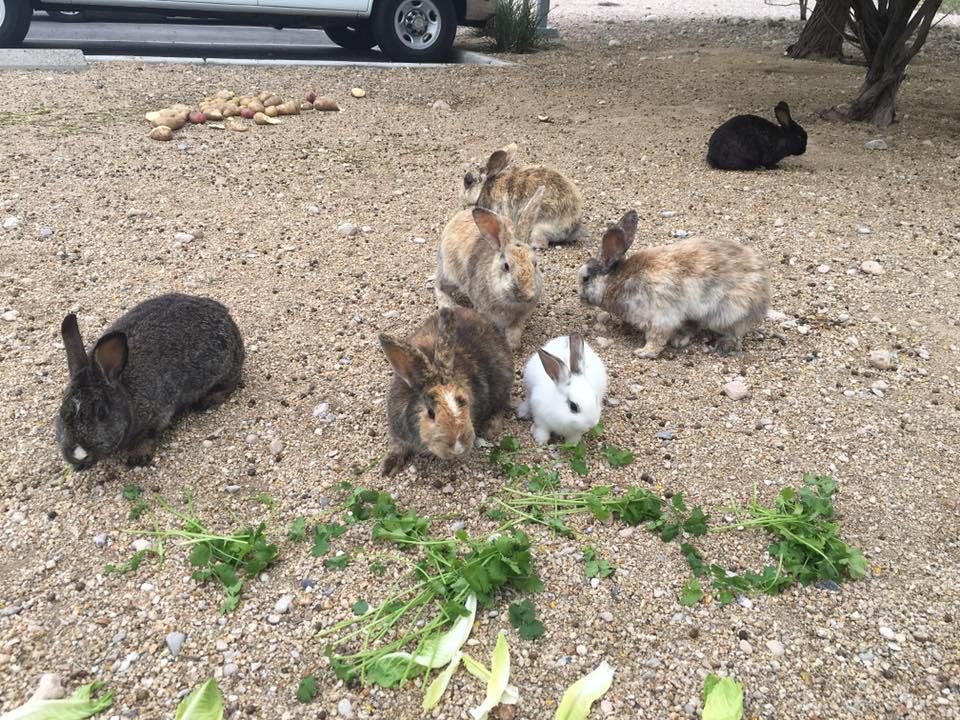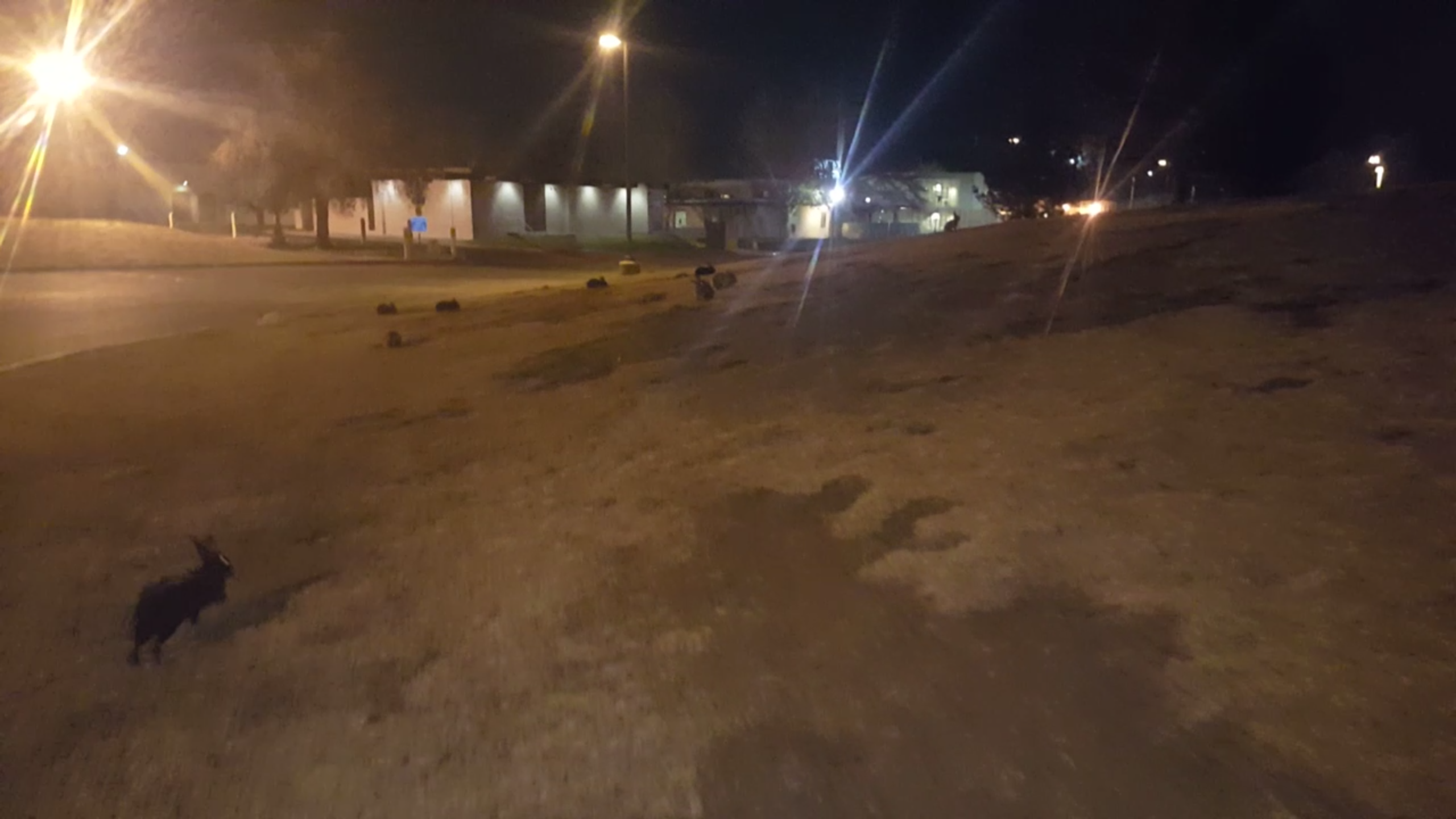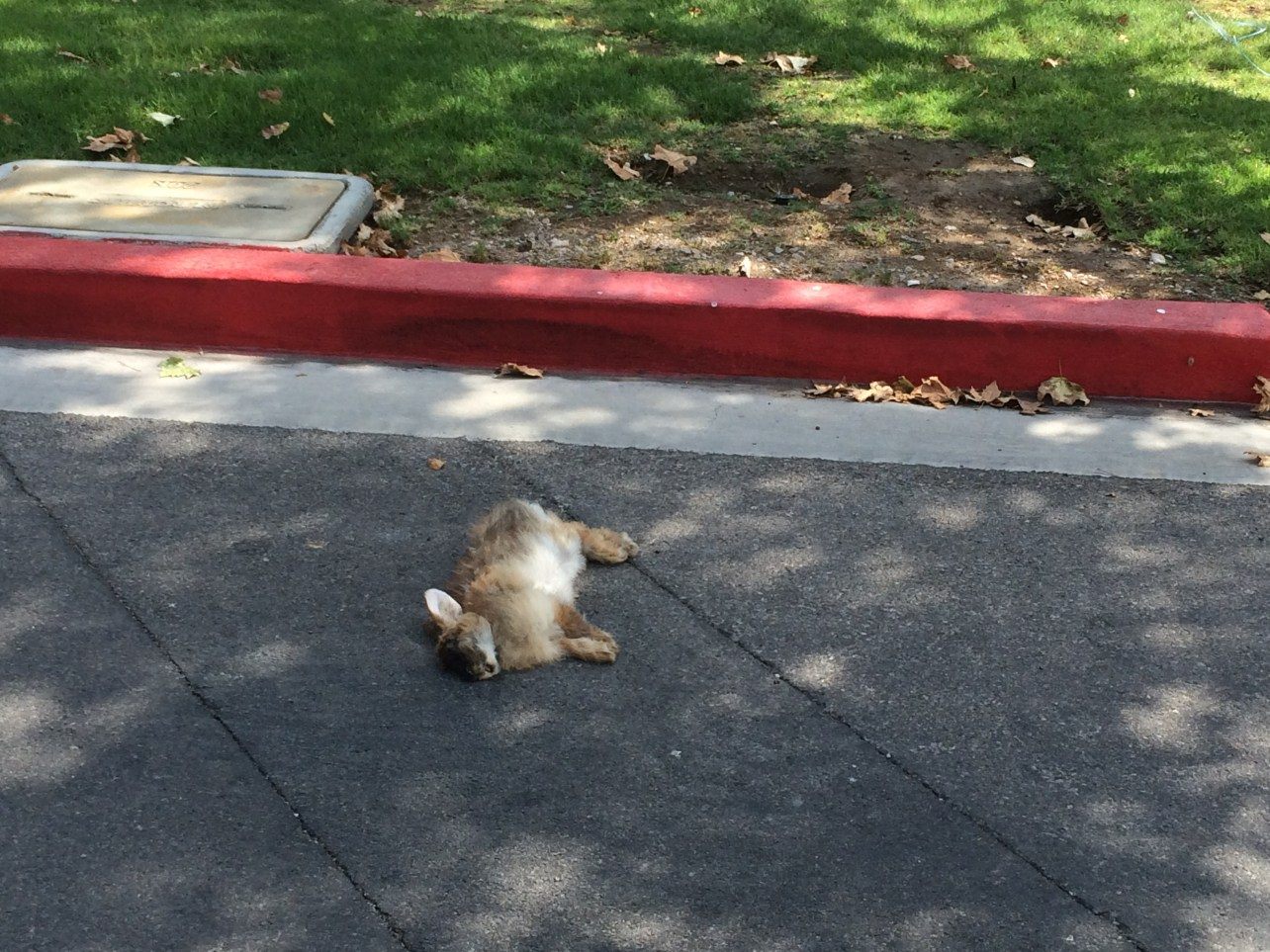Feral Bunnies Are Taking Over Las Vegas
They’ve overrun yards, state parks, and even a mental health care facility—and no one knows what to do with them.

In early 2015, Dave Schweiger, a longtime Las Vegas resident, came home from work to find his teenage daughter sitting on the lawn, surrounded by six bunnies. These weren’t the dun-colored jackrabbits of the Nevada desert: they were bonafide domestic bunnies, sleek and multipatterned, with cute ears and fuzzy coats. The Schweigers, who are animal lovers, were unfazed. They started buying extra carrots on their weekly trip to Costco.
But six bunnies doesn’t stay six bunnies for long. Within two months, there were 24 living under the Schweiger’s shed. When, with the help of a local rescue center, Dave caught them and took them to the vet to get neutered, he found out several of his new friends were pregnant again. “In another month, we would have had over 50,” he says. If they hadn’t taken action, the Schweigers’ yard might have turned into a common, but little-known Sin City feature: the bunny refugee camp.

The yards, parks and lots of Vegas are home to thousands of feral rabbits. Known as “bunny dump sites” to the legions of volunteers that care for their residents, they’re strange places, more tragic than adorable, where the human heart clashes with the limited resources of the state. Released by overwhelmed pet-owners and left to breed, the rabbits now overwhelm any attempt at government control, digging up public property, chewing on pipes, and ending up dead in the sewers. To survive, they depend entirely on the kindness of self-identified “bunny-lovers”—volunteers faced with an impossible task.
Schweiger works near one of the more legendary dump sites, a state-run mental health facility in the center-west of the city. It’s home to hundreds, if not thousands, of rabbits—although if you didn’t already know that, you might not find out. “You go out to the field and you don’t see any,” Schweiger says. “I start throwing out hay, romaine lettuce, and carrots, and they just come out of everywhere.”
Schweiger runs an awareness-building website called Las-Vegas-Bunnies.com, and often meets other concerned citizens at this particular site to feed and check on the rabbits. In a video from his most recent visit, scores of excited bunnies traipse over the dead grass and under the picnic tables as volunteers strew bits of lettuce across the ground.
The facility was also the site of the most recent official attempt to address the problem. Last year, the state gave V Animal Sanctuary, a local farm and domestic animal shelter run by Sacbe Meling, a $17,000 contract to capture, spay, and rehome a few hundred rabbits. In a Channel 13 News investigation, the state said it expected 80 percent of the rabbits to be gone within six months. But although Meling did what he was supposed to—he says he got 258 rabbits off the property, although many were too sick to rehome—it wasn’t nearly enough, and whatever dent he made in the feral population was filled within months.
In Meling’s view, his experience illustrates the many intractable issues facing anyone who tries to pull off a long-term fix. “The issue is not one that can be fixed in a couple of months, or even a year, without a proper budget,” he says. He estimates that, even if volunteers did all the work, at least $1.5 million would be required—money that citizens could, and likely would, argue should be spent elsewhere. “There’s going to be a group that’s going to complain, ‘Why’s that going for animals? Why not for homeless people, or for the vets?’” Meling says.

In the very small chance you managed to drum up the funds, there’s the problem of space—what hoppens in Vegas has to stay in Vegas, but where? “Once you take them, where are you going to put them?” he asks. ”Someone’s going to have to float a whole property for rabbits, and I don’t see that happening. I think it’s just a never-ending issue.” The state did not respond to a request for comment.
In the meantime, various volunteers and groups work to make the situation a little more tenable for the rabbits. Their most effective option—“trap, neuter, return,” in which bunnies are spayed or neutered and then brought back to the wild—is technically illegal in Las Vegas, as the “release” part of it constitutes abandonment. Instead, they focus on keeping them strong and healthy, so they can survive their lives’ many difficulties. They’re territorial, and if food is scarce, they’ll fight each other. Snow and heat both take a toll on them. Although hunting, culling, or poisoning the rabbits is illegal, there have been rumors of bowhunting, and last summer some volunteers found avocado—deadly to baby rabbits—stuffed deep into a warren.
Schweiger, who walks past a local crew of bunnies every night with his wife, goes through a few 10-pound bags of Costco carrots per week, along with a dozen or so heads of romaine. Evenings and weekends he goes to the state facility, where he regularly leaves big jugs of water. Of his 1500 or so Facebook friends, Schweiger estimates 1200 are fellow rabbit helpers, each with their own chosen territory. “There’s people at Floyd Lamb State Park, people at Sunset Park,” he says. “We’ve got a bunch of rogue bunny-lovers all over, feeding.”

Education is another vital prong in the volunteers’ approach. A lot of people don’t know the truth about pet rabbits, says Schweiger. If people are dissuaded from adopting one before they’re truly ready, they’re less likely to abandon them—and if they’re empowered to treat them well, they might be encouraged to adopt one of the many rescue bunnies that he and others are currently fostering. On a Facebook wall called “Bunnies Matter in Vegas Too,” successful rescues with names like Oreo and Patriot twitch their noses and explain what is required to properly take care of them—chew toys, a good pen with a litter box, a local vet who’s willing to handle the occasional bout of rabbit colic.
Schweiger himself is back up to seven rabbits—two in the garage, five in the house. If possible, he’d like to rehome them, but in the meantime, he’s ok with being greeted by them every evening, sleek and happy in their pens, safe from starvation, poison, and other rabbits. “They’re such good bunnies,” he says. “If I can ever get them adopted, people would be amazed.”
Naturecultures is a weekly column that explores the changing relationships between humanity and wilder things. Have something you want covered (or uncovered)? Send tips to [email protected].








Follow us on Twitter to get the latest on the world's hidden wonders.
Like us on Facebook to get the latest on the world's hidden wonders.
Follow us on Twitter Like us on Facebook